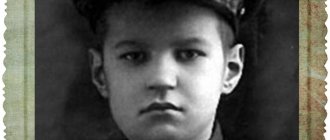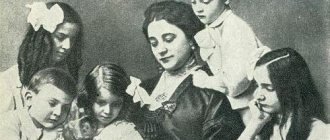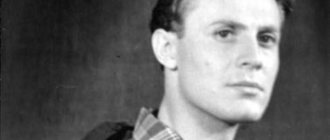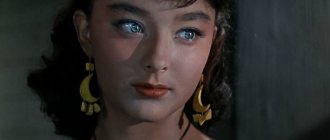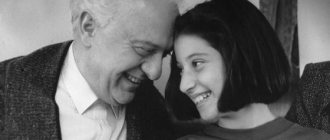The appearance of this actor on the screen invariably caused smiles and laughter among the audience, while Millyar himself lived a far from joyful life
Subscribe and read Express Newspaper in:
Under Soviet rule, he had to hide his real origin, and Georgy Frantsevich a real aristocrat: one of his grandfathers was a major gold miner, his father was named Franz de Milieu and was a famous French engineer. A wealthy family lost literally everything as soon as the 1917 revolution broke out. George de Milieu had to change his last name and carefully hide his roots.
First role - Cinderella
Millyar the theater since childhood. In his youth, he worked as a prop maker in one of the theaters and one day dared to ask the director for a role: just before the performance, it turned out that the actress who played... Cinderella . Millyar passionately argued that he could replace the actress. And he did it brilliantly!
Millyar was noticed by many then, among whom was the great film director and storyteller Alexander Rowe . It was then that he invited Millyar to his film. Beginning in 1939, Georgy Frantsevich played Rowe's most stellar roles - Kashchei, Leshy, Baba Yaga and other evil spirits.
Male Baba Yaga
Georgy Millyar as Baba Yaga.
Still from A. Rowe's film "Morozko", 1964 It is interesting that the director first wanted to cast an actress to play Baba Yaga . But Millyar was able to prove: not a single woman would allow herself to be disfigured to such an extent that she would turn out to be a terrible Baba Yaga! After all, every actress wants to look beautiful on screen. In addition, it is physically difficult to play the role of a hunchbacked Yaga flying in a mortar. And a man - please, cope with any difficulties! And Rowe made up his mind.
Millyar made a very convincing Baba Yaga. Then the artist admitted that, while getting used to the image of a nasty old woman, he remembered two women he knew: a hunched old woman from Yalta who constantly tended a herd of goats, and a scandalous neighbor in a communal apartment, and used their traits in creating the character of his heroine. To perform complex makeup, I had to sit motionless under the hands of the makeup artists for 6 hours every day!
Georgy Millyar was born on November 7, 1903 in Moscow in the family of French engineer Franz de Milieu. Franz came to Russia to work as a consultant to Russians in the field of bridge construction. It was here that he was charmed by the daughter of an Irkutsk gold miner, Elizaveta Zhuravleva. Having married, he received, in addition to the hand and heart of a beautiful young lady, a decent dowry.
The life together of Franz and Elizabeth was not long. Little George was not yet three years old when his father died. Nevertheless, the de Milieu family continued to live in prosperity. They had a huge apartment in Moscow, two dachas - in the Moscow region and in Gelendzhik. French governesses taught the boy languages, music, literature, and his aunt, a famous theater actress at that time, instilled in him a love of theater.
It is not surprising that George was drawn to acting from an early age. His first scenes were the living room in a Moscow apartment and the terrace of a dacha near Moscow, where he performed for relatives. Once, at the age of seven, a boy painted his face, deciding to transform himself into Mephistopheles from Faust. To Georgy’s disappointment, none of the relatives were afraid; on the contrary, smiles appeared on their faces...
George's serene childhood ended in 1914. Fearing pre-revolutionary unrest, his mother decided to send George away from troubled Moscow - to his grandfather in Gelendzhik. Here he lived for more than five years, and here he met the news of the revolution that had broken out in Russia...
The revolution took away from their family both money and a Moscow apartment with a dacha near Moscow. Fearing more, George's relatives prudently corrected his last name. So he turned from de Milieu into just Millyar. Subsequently, Georgy Frantsevich tried not to touch on his past, and did not indicate knowledge of foreign languages in his questionnaires, although he was fluent in both French and German.
After graduating from school in Gelendzhik, Georgy Millyar got a job as a prop maker in a local theater. He worked conscientiously, but dreamed of more - a career as an actor. He knew all the roles by heart. And the happy hour in his destiny has come.
This happened in 1920 - the actress playing the role of Cinderella suddenly fell ill. In panic, the theater management even intended to cancel the performance, when suddenly someone remembered the diligent prop maker. Georgy was literally “pushed” onto the stage, and they were not disappointed - the young actor coped with the task excellently. So, gradually, they began to introduce him to other roles.
In 1924, Georgy Millyar, who already had experience performing on the theater stage, returned to Moscow and entered the Junior School at the Moscow Theater of the Revolution (currently the Mayakovsky Theater). The teachers greeted the young man warily - his unusual appearance, terrible diction. Georgy Millyar recalled: “According to my psychophysical characteristics, I was a difficult student, and many teachers would have abandoned me if not for a sense of professional curiosity... The “Consilium” of teachers for a long time could not predetermine the outcome either for or against, and therefore they did not kick me out...”
After completing his studies in 1927, Georgy Millyar was accepted into the troupe of the Moscow Theater of the Revolution. He worked there until 1938, quickly gaining fame as a character actor. Many of his roles remain in the memory of Moscow theatergoers: Duke of Albano (“Lake Lul”), Mokronosov (“The End of Krivorylsk”), Pikel (“Gop-lya, we live”), pharmacist (“Romeo and Juliet”), Attaché ( “Calvary”), Boltikov (“Inga”), Imanguzha (“Poem about the Ax”), Mr. Gawker (“Street of Joy”), Count Ludovico (“Dog in the Manger”).
It seemed that everything was good in his career: a strong position in the theater, the love of the audience, but this did not suit Georgy Millyar himself. Cinema attracted him. And in 1938 he left the theater...
In cinema, Georgy Millyar began with episodes that hardly anyone will remember today. He received his first big role - King Pea - in the film fairy tale by Alexander Rowe “At the Command of the Pike”. This was also a debut for the director. And the debut turned out to be magnificent: the self-propelled stove, the geese backing away, the talking pike were so liked not only by children, but also by adults that the director was immediately ordered a new fairy tale, which would tell about the struggle between good and evil. This is how “Vasilisa the Beautiful” was born.
Alexander Rowe invited Sergei Stolyarov to play the main role of the fabulous Russian hero, and it was a sure hit. But for a long time the director could not decide on a candidate for the role of Baba Yaga. Many famous actresses auditioned, including the famous Faina Ranevskaya, but Rowe understood that there had to be something different here. Having shared his doubts with Millyar, he heard the answer: “Can I play Baba Yaga? This role should not be played by a woman..."
The Stolyarov-Milliar duet turned out to be simply phenomenal. Millyar, naturally thin, looked like a real monster in makeup. They say that during the filming, children ran away crying in different directions as soon as they saw him. The handsome hero Sergei Stolyarov, personifying all the bright forces of humanity, looked even more advantageous against his background.
This successful duet also worked superbly in another film by Alexander Row - the fairy tale “Kashchei the Immortal”. Stolyarov again played the Russian hero, and Millyar this time appeared in the image of Kashchei. The decision to stage the film was made back in 1941, after the start of the Great Patriotic War. Hence the theme of the fairy tale - the victory of the Russian hero over the enemy. In the image of Kashchei, Row saw only Georgy Millyar, but he unexpectedly refused: “I can’t! There’s not enough talent!” Rowe, knowing how to convince Millyar, began simply inviting him to discuss individual episodes of the film. And it worked. Millyar showed up for the next discussion with his head and eyebrows shaved, and it became clear to everyone that the actor had decided to act.
The premiere of the film took place on Victory Day - May 9, 1945. Since the cinema could not accommodate everyone, the screen was moved to the square. Millyar played Kashchei, who the audience associates with fascism, played with a grotesque approach approaching the images of early Gothic. He was really scary in this way. The finale looked even brighter when the main villain turned out to be not so Immortal and died at the hands of the hero Sergei Stolyarov.
Georgy Millyar starred in almost all of Alexander Row’s films (the only exceptions are the children’s film “The Secret of the Mountain Lake,” shot by the director at the Yerevan film studio, and the ballet film “The Crystal Slipper”). And each of their collaborations is the brightest mark on Russian cinematography. Both children and adults have enjoyed watching these movie fairy tales for decades.
His heroes, as a rule, represented the “forces of darkness” in fairy tales: the Devil from “Evenings on a Farm near Dikanka”, the villainous courtier Kwak from “Marya the Mistress”, the underwater king Miracle-Yudo in “Barbarian the Handsome, Long Braid”, werewolf Kastryuk in "Finist the Clear Falcon". By the way, those who watched the fairy tale film “Marya the Mistress” remember how the evil Kwak falls into a boiling lake green and comes out red. However, the actor himself had no time for fun during filming. During the filming, they shaved his head, smeared his face and hands with green paint, and put funny green flippers on his feet.
Millyar generally worked very carefully on creating his images, choosing makeup, eyebrows, mustaches, nose, ears, warts, and hairstyle. He often shaved his head in order to make the work of the make-up artists easier. And how long did he rehearse in front of the mirror the various antics and habits of his heroes! That's why his characters always turned out to be very lively and caused such delight among the audience. At one of the film festivals, children awarded Millyar the title “The most charming evil spirit” - isn’t this a real recognition of people’s love?!
Baba Yaga, an image entirely created by Georgy Millyar, enjoyed particular success with the audience. In total, the actor played Baba Yaga on screen about ten times, and this image was not static, it evolved all the time. Over time, his heroine turned from an evil enemy into an old gossip, tormented by radiculitis and not without human weaknesses. Georgy Millyar himself spoke about his favorite character: “In Vasilisa the Beautiful, my grandmother is such a summer resident with a bandage on her head, but in Morozko she has already become decrepit, weakened, and her radiculitis, poor thing, has tormented her. My neighbor in the communal apartment gave me plenty of material for Baba Yaga. She had a terrible character, she was a quarrelsome person, she definitely had to quarrel with someone. And in Yalta I saw an old woman herding goats on Tea Hill. An old, old Greek woman, hunched over, with a hooked nose, an unkind look, and a short stick in her hands... This is not a woman’s role. What kind of actress allows herself to be made so scary on screen? The make-up artist will only turn away and she will immediately paint on her eyelashes.”
In the films of Alexander Row, Georgy Millyar often played not one, but two or three roles. So in the fairy tale “Fire, Water and Copper Pipes” he played Baba Yaga and Kashchei, in the fairy tale “Golden Horns” - Baba Yaga and Grandfather Markei, and in “The Kingdom of Crooked Mirrors” he appeared in three roles at once: the Chief Master of Ceremonies, the royal the driver and the queen dowager.
Vivid images were created by Georgy Millyar in films by other directors. Many people remember the performance of the actor The Wise One from the fairy tale by director Boris Rytsarev “Aladdin’s Magic Lamp” with his statement: “Truly, the ways of omniscience are inscrutable, the awareness of knowledge is a sign of ignorance, the awareness of ignorance...” Among other fairy-tale characters: Mr. Brownie in the modern fairy tale by Boris Buneev “ Village Duck", the sage Selim in "Caliph Stork" by Viktor Khramov, the evil wizard Smog in Gennady Kharlan's film "Andrey and the Evil Sorcerer".
At the same time, Georgy Millyar acted not only in fairy tales. Appearing on screen in some cameo role, he always attracted attention. The puny old chess player from Leonid Gaidai’s eccentric comedy “Prisoner of the Caucasus”, the jester Balakirev in Yuri Shvyrev’s historical film “The Ballad of Bering and His Friends”, the leader of the Khaps Gy from Radomir Vasilevsky’s children’s fantasy film “Step from the Roof”, Uncle Yasha in the musical comedy Vladimir Gorikker's "Silver Revue" - these roles are like small bright grains of his enormous talent.
Unfortunately, Georgy Millyar's talent was used by film directors in a very one-sided way: either in fairy tales as evil spirits, or in episodic comedy roles. And Millyar dreamed of playing the great Russian commander Alexander Suvorov for many years. And certainly, his Suvorov would take a worthy place in Russian cinema. But he was unable to play either Suvorov, Voltaire, or Caesar—the stereotypes around the most talented actor were too strong.
There are a lot of rumors about the personal life of Georgy Millyar. They say that at the age of 30 he married a young, frivolous actress. She started an affair with the film director, and then told Millyar about the planned replenishment. To this, Georgy Frantsevich allegedly replied that he could not have children, and therefore she could go to the true father of the alleged child. Today it is difficult to say whether this is true or just one of the legends. Only one thing is known for certain - that Millyar lived alone until he was 65 years old. Or rather, not alone, but with his mother Elizaveta Zhuravleva (she died in 1971). They lived in an ordinary communal apartment (the same former apartment of the Millyarov-Zhuravlevs, nationalized after the revolution), occupying only one of the rooms. And in the rest, as was usual in those years, other families lived.
In life, Georgy Frantsevich was a simple person; he preferred to be friends not with management, but with make-up artists, costume designers and lighting technicians. He loved to drink, preferring triple cologne and port to vodka. However, no one has ever seen him drunk. So - just a little drunk. On the set, he loved to make jokes, coming up with such witticisms that made the girls-costumers blush. It is no coincidence that Millyar called himself Old Man Pokhabych. However, no one was ever offended by him, since his witticisms were not offensive in nature; rather, they were part of his mask. This mask of a frivolous person saved him from repression during difficult years.
One day, a new resident appeared in their communal apartment - Maria Vasilievna. She was originally “from the dispossessed” - at one time, first her father and then her mother were arrested. She divorced her first husband before the war, and her second died at the front. From these marriages she had three children left (by the time she appeared in Millyar’s apartment, they had long since grown up).
Millyar immediately began to take a closer look at his new neighbor and stop by to visit her. And then he proposed to her. Georgy Frantsevich was then 65 years old, and Maria Vasilievna was 60. The woman was very surprised by this: “What are you talking about, Georgy Frantsevich! I don't need men! To which Millyar joked: “And I’m not a man. I am Baba Yaga."
They celebrated their wedding on the first day of filming the fairy tale film “Barbara the Beauty, Long Braid.” Or rather, it was the film crew who surprised the newlyweds by setting tables on the banks of the Moscow River. The wedding was fun: with jokes, mummers, and traditional pranks.
Before the wedding, Maria Vasilievna worked as a security guard in one of the ministries, but Georgy Frantsevich forced her to quit her job. He loved his wife very much; his daughter-in-law and his mother received her with great tenderness. Millyar also got along with his wife’s children, becoming both their father and friend. In general, peace and respect have always reigned in the Millyarov family, this is what their neighbor Lyudmila Zaitseva says: “They were an amazingly touching couple. Georgy Frantsevich called her “Manechka” and “honey,” she never heard a curse word from him, and the biggest curse was: “Well, Manya, you got me!” I never saw Georgy Frantsevich at home in tights; he always wore a shirt and trousers, and always wore a bow tie to his performances. I washed my own clothes and went to the store until I was 87. Without makeup, no one recognized him, and only when they heard his characteristic gruff voice did people turn around, apparently remembering where they had heard it before. And what a gallant man he was! Nowadays you won't see such people anymore. He will always kiss your hand and let you go ahead.”
Georgy Frantsevich Millyar lived a long, happy life. Yes, happy, despite the fact that I lived in a communal apartment for a long time and received a separate apartment at the age of 80, despite the fact that I did not save up for a dacha or a car, despite the unplayed roles in films, despite the fact that that he officially became a people's artist only at the age of 85. But how can all this compare with the enormous popular love that has always surrounded this man? He was constantly invited to meetings at schools and enterprises, pioneer camps and military units, and he never refused anyone. He couldn't refuse at all. One day a neighbor girl came to him and began to look at his drawings. Georgy Frantsevich allowed her to take the one she liked best. “Can I take everything?” – the girl asked, and he gave everything.
Georgy Frantsevich did not live to see his 90th birthday for five months. He died on June 4, 1993. Maria Vasilievna outlived him by six years...
Based on materials:
rusactors.ru
en.wikipedia.org
and open sources.
Koschei the Immortal
In Rowe's fairy tale "Kashchei the Immortal" Millyar is simply inimitable: bony, evil, scary... Shortly before filming, Georgy Millyar suffered a serious illness - malaria. As a result, the already slender actor lost a lot of weight. He showed up for filming weighing only 40 kilograms!
His appearance caused horror - but this was what was needed to create the on-screen image of Kashchei. The film was released in 1944. The country, exhausted by a long, difficult war, was thirsty for fairy tales, and Rowe tried to make up for the lack of magic with his films.
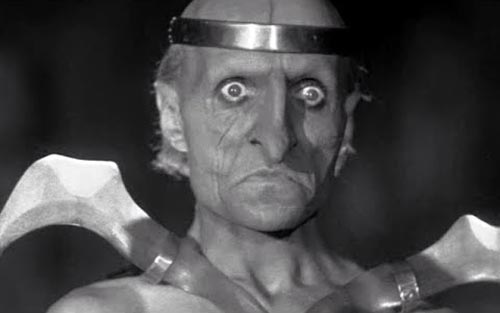
Still from the film “Kashchei the Immortal”
Having seen Kashchei performed by Millyar, the audience unanimously decided: he looks like Hitler ! Then Hitler was the main embodiment of evil and the object of hatred. Perhaps this association prevented Millyar from furthering his career: after all, apart from Rowe, no one offered him significant roles, although the actor’s filmography includes much more than a hundred roles.
Bad habits and rumors about sexual orientation
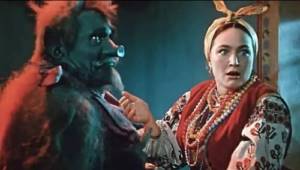
Still from A. Rowe’s film “Evenings on a Farm near Dikanka”, 1961 At one time there were rumors about Millyar’s unconventional sexual orientation. Then this was a very serious charge - he could well end up behind bars.
When the rumors reached a critical level, Alexander Rowe made a “knight’s move”: he quickly persuaded the artist to get married in order to stop unwanted gossip. Georgy Frantsevich’s “chosen one” was 60-year-old Maria Vasilievna . She lived in the same communal apartment with the artist. The widow with three children became the artist’s true friend and faithful life partner.
However, Millyar’s friends were indignant at the rumors about his “peculiarities.” They believed that officials simply could not forgive Georgy Frantsevich’s penchant for alcohol, so they began to spread gossip.
The artist really liked to drink. He owns the expression: “Alcohol is a means that reconciles a person with reality.” And his favorite drink was... triple cologne.
Movies
Georgy Millyar's work in cinema began with small episodic roles. But the actor received his first major role in the fairy tale film by Alexander Rowe “At the Command of the Pike” (1938). He played King Pea. This film was also Rowe’s debut, but the audience liked the talking pike, the self-propelled stove, and the geese walking backwards so much that the director immediately received an order for the next fairy tale.
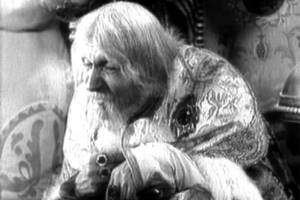
Georgy Millyar in the film “At the Command of the Pike”
Next was the film “Vasilisa the Beautiful”, where Georgy Millyar perfectly embodied the image of Baba Yaga. Giving the female role to a man was the right decision, because, as the artist himself said, not a single woman would allow herself to be shown so scary on the screen. Millyar worked on the image of Baba Yaga independently - he observed elderly women, adopting their facial expressions, gait, and gestures. In addition to the scary old woman, Millyar played two more roles in the film, but was listed in the credits only once.
In 1941, Soyuzdetfilm decided to film a fairy tale with a patriotic overtone, “The End of Koshchei the Immortal.” In the image of Koshchei, the creators of the film saw exclusively Georgy Frantsevich, who for a long time did not agree to filming, doubting his abilities. Once, at a discussion of film episodes, the actor appeared with a completely shaved head and no eyebrows. This is what Millyar always did on set to make the work of the make-up artists easier. It became clear that the artist was ready to act. The fairy tale premiered to a full house on Victory Day.
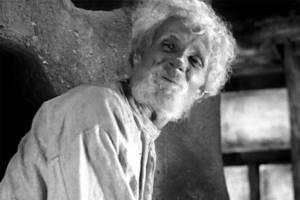
Georgy Millyar in the film “Vasilisa the Beautiful”
Subsequently, Georgy Millyar became the most “fabulous” actor in the world. He brilliantly played many negative characters, embodying the images of witches, werewolves, monsters and other representatives of the “forces of darkness.” The artist played Baba Yaga about ten times in total, and the image changed from one role to another. He designed the costumes himself and liked them to be scarier.
Millyar collaborated with director Alexander Rowe for many years. In 16 films by the creator, he performed three dozen roles. His brightest images are the Devil from “Evenings on a Farm Near Dikanka”, Baba Yaga in “Morozko”, the underwater king Miracle Yudo in “Barbarian Beauty, Long Braid”, the court villain Kwak from “Marya the Mistress”, the werewolf Kastryuk in “ Finist-clear falcon” – are still remembered by the viewer.
Georgy Millyar also worked with other directors, for whom he managed to portray no less colorful characters. I remember the roles of the Wise One in director Boris Rytsarev’s fairy tale “Aladdin’s Magic Lamp”, Mr. Brownie in the modern fairy tale “Duck Village” by Boris Buneev, the sage Selim in “Caliph Stork” by Viktor Khramov, the evil sorcerer Smaug in Gennady Kharlan’s film “Andrey and the Evil Sorcerer”.
In addition to fairy tales, Georgy Frantsevich starred in other films. He took part in such films as “Prisoner of the Caucasus”, “The Ballad of Bering and His Friends”, “Step from the Roof”, “Silver Revue”.
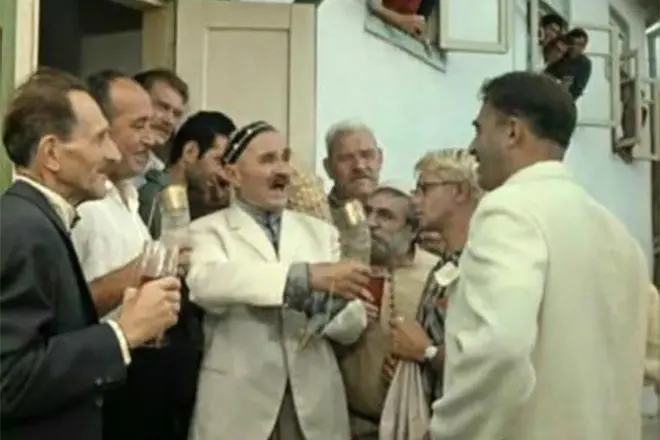
Georgy Millyar in the film “Prisoner of the Caucasus”
Even appearing in an episode, the talented actor knew how to attract attention.
The filmography of Georgy Millyar includes more than a hundred works. He last starred in the film “Ka-ka-doo” in 1992.
Death of the Righteous
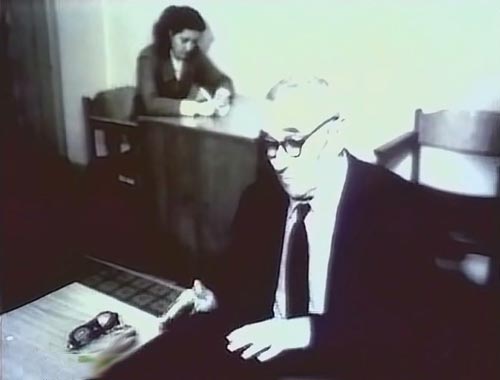
Still from the film “Ka-ka-doo”, 1992. The famous actor lived for 90 years. At the end of his life, he no longer acted - directors refused his services, fearing that the fragile old man would die during filming. From time to time he had small roles in Yeralash, episodes in some films, and he also worked as a voice actor...
But, for the most part, Millyar had to get by without work, and therefore without money. Rowe was no longer alive, otherwise he would certainly have filmed his favorite actor until his last days. And he died the way, they say, the righteous are destined to leave this world: he fell asleep and did not wake up. This happened in June 1993.
Olga Moiseeva
Georgy Millyar Interesting story Movies and TV series Our heroes of the USSR
Aristocratic origins of Georgy Millyar
By origin, Georgy Millyar can be considered an aristocrat. The artist’s mother was the daughter of an Irkutsk gold miner. The girl lived in a wealthy family and received a good education and upbringing. Father - French engineer Franz de Milieu. A real aristocrat, one of the titled families of France.
The boy grew up in a wealthy family. He lived with his parents in a large apartment in Moscow. He was raised by nannies and governesses. But with the Bolsheviks coming to power, everything changed. The family was dispossessed. The luxurious apartment became an ordinary communal apartment, and mother and son were left with only one room. By that time, Father George had passed away. The aristocratic surname was changed to the simplified version Millyar, losing the noble origin of the particle “de”.
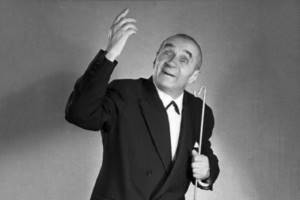
Later, Millyar hid his noble origin and knowledge of two foreign languages. He lived like most Soviet citizens of that period. No arrogance, luxury or increased attention to your person.
Seal or dinosaur. The remains of a strange beast were found in Antarctica
I made a cozy hammock for my cat out of a cardboard box: step-by-step instructions
Which white shirts should you get rid of before spring: in 2021 they are no longer in fashion
